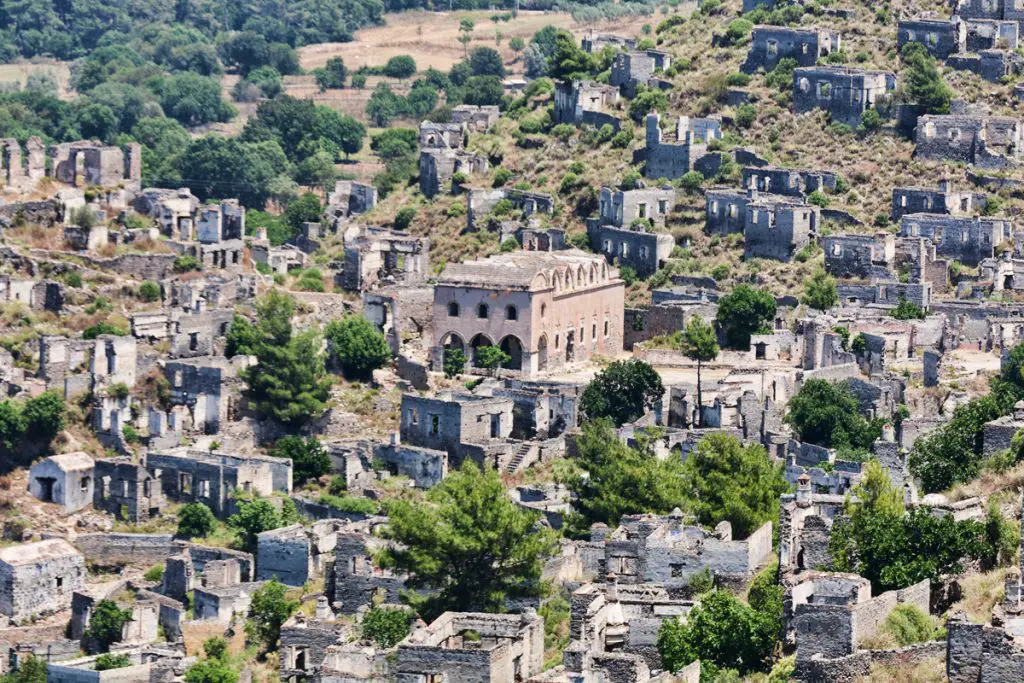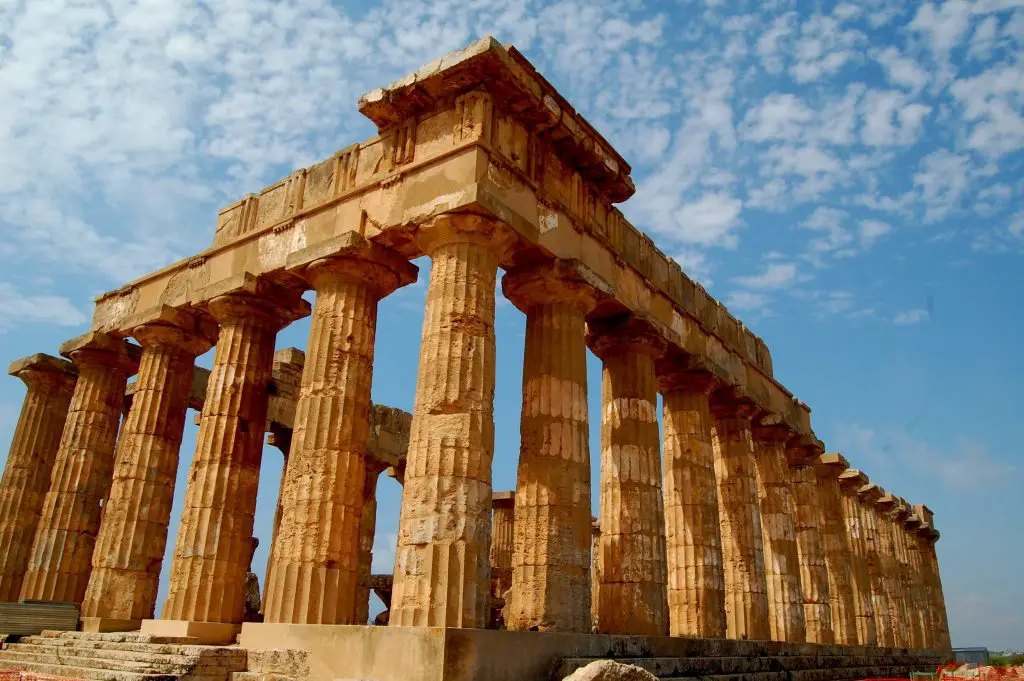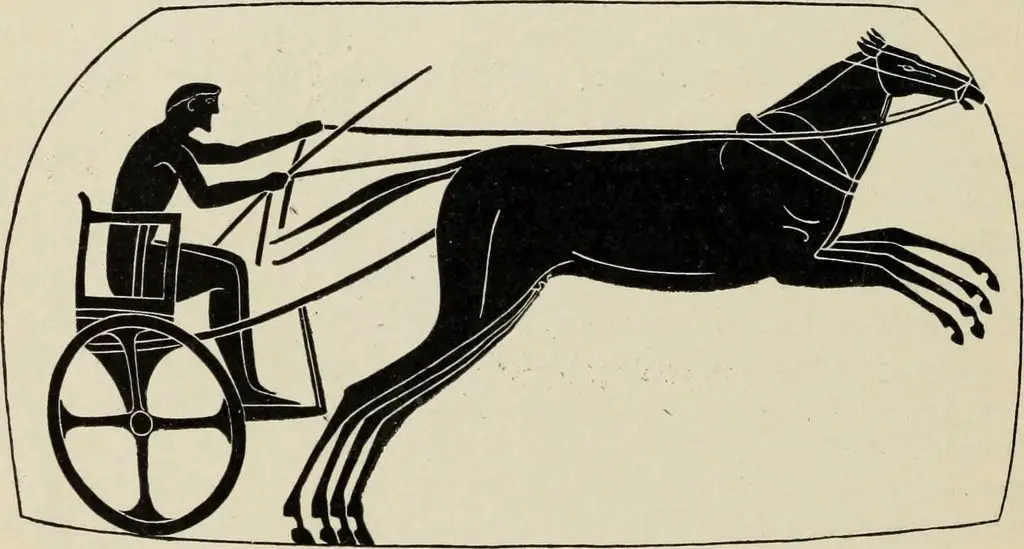Greece is very mountainous. About 75% of the Greek mainland is covered with mountains. In Ancient Greece, this made it hard for people to travel very far by land.
They traveled mostly by sea, and the mountains created barriers that separated the Ancient Greek towns. For this reason, Ancient Greece was divided into independent city-states.
The city-states had their own governments. Most were ruled by tyrants, kings, or small groups of powerful people. Athens had a democracy.
Each city-state was different, but they were also the same in many ways. They had a similar language, similar cultures, and similar buildings. Let’s learn about the typical Ancient Greek town!

Common Features of the Greek Polis
Another name for an Ancient Greek city state was a polis. There were several features that most poleis (plural for polis) had in common.
Most people lived in the heart of the city instead of in the surrounding countryside. At the center of the city was usually a temple or multiple temples.
In most city-states, the city was protected by a tall stone wall. (One polis that did not have a wall was Sparta. They were such fierce warriors that other city-states did not want to attack them.)
The last area of defense if the city was attacked was usually an acropolis. An acropolis was a hill or high point that overlooked the town.
The city-states also had a large open space called the agora. The agora was a marketplace or meeting place for the townspeople.
Most city-states had a space for public assembly, where people gathered for political purposes or for entertainment. This could be a stadium, gymnasium, or theatre.
Some areas of each town were usually designated for housing. Greek homes were plain and often had very little furniture. They were built around a central space called a courtyard.
Temples
Most of the city-states had a patron god or goddess that they believed watched over their city. The city-state would have a large area and temple for their patron god.
Some city-states had smaller temples for other popular gods and goddesses.

Agora
The agora was a large, open area that served as a marketplace. The agora was surrounded by long, open-air buildings that contained shops.
The Ancient Greeks gathered in the agora to trade, buy, and sell goods. Sometimes they also listened to speeches or discussed politics in the agora.
Theatre
Theatre was popular in Ancient Greece. Many Greek cities had big, open-air theatres where people would watch plays during festivals. Some could hold more than 10,000 people.
Actors usually played more than one role in Ancient Greek plays. They wore different masks so people would understand which character they were playing. Only men performed in the theatre.
Stadiums and Gymnasiums
Sporting events and competitions were popular in Ancient Greece too. They built large stadiums to watch athletic competitions. One type of stadium, called a hippodrome, was for chariot races.
Gymnasiums were built as training facilities for the athletes. Only adult males could go to the gymnasium. They were also places where men socialized and talked about politics and philosophy.

Housing
In some towns, housing was divided based on what the man of the house did for a living. For example, one part of the city might be for farmers, another for soldiers, and another for craftsmen.
Common Ideas of the Greek Polis
Features weren’t the only thing that the Ancient Greek city-states had in common. Many of the city-states shared similar ideas, cultures, and social structure.
Each city-state was made up of male citizens, women, children, slaves, freed slaves, laborers, and foreigners. Male citizens who owned land were supposed to have full and equal political rights.
In most city-states, though, political power was dominated by a few families who held all the important positions within the polis. This included high-ranking military positions and membership in elite councils and magistracies.
Male landowners were also separated into classes based on wealth. Once money and coinage were introduced, the wealthy class became even wealthier. This created a larger separation between rich and poor.
The city-states shared the same language and the same general ideas about religion too.
Other Interesting Facts About Typical Ancient Greek Towns
- Greek city-states kept their own identities with unique festivals, separate coinage, and separate laws.
- They were also known for different skills or interests. For example, Corinth was known for architecture and pottery. Megara was known for beautiful textiles, while Rhodes was known for shipbuilding. Athenians were scholars and Spartans were warriors.
- Ancient Greeks were loyal to their city-states. Instead of considering themselves Greek, they would say they were Spartan, Athenian, Corinthian, etc.
- Many cities had a mint in the agora where they produced their own coins.
- Near the agora, there was usually a council house called the bouleuterion where government officials held important meetings.